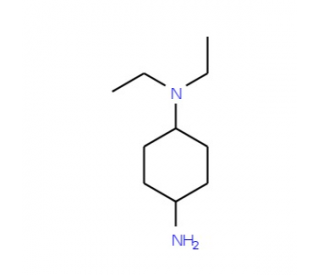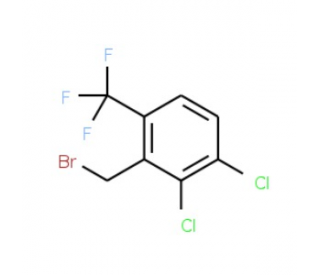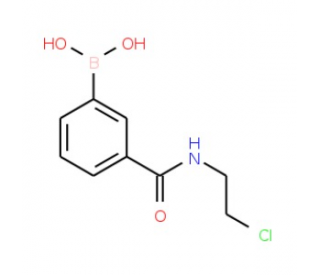詳細(xì)說(shuō)明
Purity
>95%, by SDS-PAGE visualized with Silver Staining and quantitative densitometry by Coomassie? Blue Staining.
Endotoxin Level
<1.0 EU per 1 μg of the protein by the LAL method.
Activity
Measured by its ability to cleave a colorimetric peptide substrate, 1-O-hexadecyl-2-deoxy-2-thio-S-acetyl-sn-glyceryl-3-phosphorylcholine (2-Thio-PAF), in the presence of 5,5’Dithio-bis(2-nitrobenzoic acid) (DTNB). Edwards, K.M. et al. (1999) J. Biol. Chem. 274:30468. Stewart, A.G. et al. (1991) J. Lipid Mediat 4:299. Aarsman, A.J. et al. (1991) Eur. J. Biochem 200:187. The specific activity is >9,000 pmol/min/ug, as measured under the described condition. See Activity Assay Protocol on .
Source
E. coli-derived Met33-Asn441 & Leu45-Asn441, both with a C-terminal 6-His tag
Accession #
N-terminal Sequence
AnalysisMet33 & Leu45
Predicted Molecular Mass
46 kDa
SDS-PAGE
42 - 45 kDa, reducing conditions
5106-PL |
| |
Formulation Supplied as a 0.2 μm filtered solution in Sodium Acetate, NaCl and Glycerol. | ||
Shipping The product is shipped with polar packs. Upon receipt, store it immediately at the temperature recommended below. | ||
Stability & Storage: Use a manual defrost freezer and avoid repeated freeze-thaw cycles.
|
Assay Procedure
Materials
Assay Buffer: 50 mM MES, 150 mM NaCl, 0.1 mg/mL BSA, pH 6.5
Recombinant Human PLA2G7/PAF?AH/Lp?PLA2 (rhPLA2G7) (Catalog # 5106-PL)
Substrate: 2-Thio-PAF (Cayman Chemical, Catalog # 60945), 20 mM stock in DMSO
5,5'-dithio-bis(2-nitrobenzoic acid) (DTNB) (Sigma, Catalog # D-8130), 10 mM stock in DMSO
96-well clear plate (Costar, Catalog # 92592)
Plate Reader (Model: SpectraMax Plus by Molecular Devices) or equivalent
Dilute rhPLA2G7 to 0.1 ng/μL in Assay Buffer.
Dilute Substrate to 200 μM containing 200 μM DTNB in Assay Buffer.
Load 50 μL of 0.1 ng/μL rhPLA2G7 into a plate, and start the reaction by adding 50 μL of Substrate/DTNB. Include a Substrate Blank containing 50 μL Assay Buffer and 50 μL of Substrate/DTNB.
Read absorbance at 405 nm in kinetic mode for 5 minutes.
Calculate specific activity:
Specific Activity (pmol/min/μg) = | Adjusted Vmax* (OD/min) x well volume (L) x 1012 pmol/mol |
| ext. coeff** (M-1cm-1) x path corr.*** (cm) x amount of enzyme (μg) |
*Adjusted for Substrate Blank
**Using the extinction coefficient 13260 M -1cm -1
***Using the path correction 0.32 cm
Note: the output of many spectrophotometers is in mOD Per Well:
rhPLA2G7: 0.005 μg
Substrate: 100 μM
DTNB: 100 μM
Background: PLA2G7/PAF-AH/Lp-PLA2
Secretory phopholipase A2 is an enzyme that hydrolyses the Sn-2 ester bond of phospholipids, generating free fatty acids and lysophospholipids (1?3). Most secretory PLA2s are stored in cytoplasmic granules and are released in the extracellular environment on appropriate cell activation. Thus, they are present at higher concentration in the plasma and biologic fluids of patients with systemic inflammatory, autoimmune, or allergic disease, such as acute pancreatitis, rheumatoid arthritis, bronchial asthma, and allergic rhinitis. Also known as Lp-PLA2, PLA2G-VII is a plasma enzyme bound to lipoproteins: 80% bound to LDL, 15%-20% to HDL, and the remainder to VLDL (4-6). It is produced in major by mature macrophages and activated platelets. In contrast to other classical sPLA2s, PLA2G?VII has poor specificity toward Sn-2 long chain fatty acids, unless heavily oxidized, and undergoes the catalysis of its substrates in the aqueous phase rather than at the interfacial surface of lipids. Thus, it has high specificity for water-soluble phospholipids in plasma including oxidatively?modified phospholipids and platelet-activating factor (PAF). Because of the latter activity, it is also known as PAF acetylhydrolase (PAF-AH). Lack of human PLA2G?VII is related to a higher risk for stroke and heart disease.
References:
Webb, N. R. (2005) Cur. Opin. Lipid. 16:341.
Triggiani, M. et al. (2005) J. Allergy Clin. Immunol. 116:1000.
Murakami, M. and Kudo, I. (2004) Biol. Pharm. Bull. 27:1158.
Caslake, M. J. and Packard C. J. (2005) Nat. Clin. Prac. Cardiovasc. Med. 2:529.
Karabina, S.-A., and Ninio, E. (2006) Biochim. Biophys. Acta, 1761:1351.
Karasawa, K. (2006) Biochim. Biophys. Acta, 1761:1359.
Long Name:
Phospholipase A2 Group VII
Entrez Gene IDs:
7941 (Human); 27226 (Mouse); 301265 (Rat)
Alternate Names:
2-acetyl-1-alkylglycerophosphocholine esterase; EC 3.1.1; EC 3.1.1.47,1-alkyl-2-acetylglycerophosphocholine esterase; Group-VIIA phospholipase A2; gVIIA-PLA2; LDL-associated phospholipase A2; LDL-PLA(2); LDL-PLA2; lipoprotein-associated phospholipase A2; LpPLA2; Lp-PLA2; PAF acetylhydrolase; PAF-AH; PAFAHPAF 2-acylhydrolase; phospholipase A2, group VII (platelet-activating factor acetylhydrolase; PLA2G7; plasma); platelet-activating factor acetylhydrolase










 粵公網(wǎng)安備44196802000105號(hào)
粵公網(wǎng)安備44196802000105號(hào)